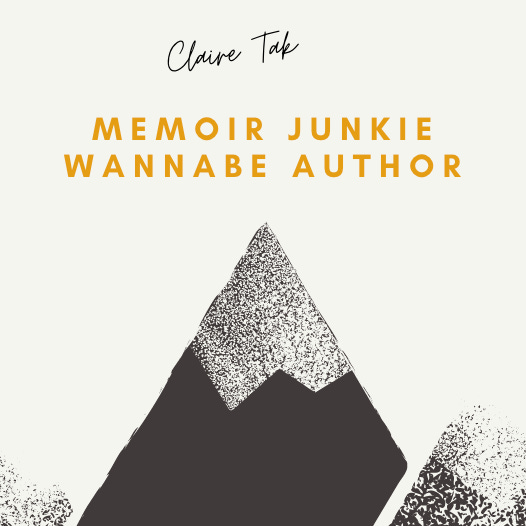Year 2 on Substack: Creating Sustainable Growth (part 1)
Months ago, a writer friend of mine asked me if it was worth it to start a Substack. Like me, she was working on a memoir. I told her yes, but it's a bit more complicated than all that.
Hi,
Months ago, a writer friend of mine asked me if it was worth it to start a Substack. Like me, she was working on a memoir. I told her, yes, it’s worth it. However, I told her to get clear on why she wanted to start one because it’s a big time commitment.
As our conversation unfolded over a Zoom call, it dawned on me that I had a lot to share about my Substack experience. From day one of starting with zero subscribers to feeling inadequate for not growing my following faster, and all of the work it took to get my newsletters published. So, today, I bring you the top lessons I learned after being on Substack for a few years.
Since my days as a Substack newbie, I’ve learned so much about what it takes to gain new subscribers, create content regularly, and figure out a routine that doesn’t leave me feeling overwhelmed. For me, Substack was a big-time investment. I was committed to trying to grow this thing while also balancing my life—my job, aging parents, dog, travel, writing my memoir…
In this newsletter, I’ll share how I grew my subscribership from nothing. This is steady growth that is an outcome of making meaningful connections, writing regularly, and providing high-quality content.
First, get clear on the why
I wanted to grow an audience for the memoir I one day hope to publish. I don’t expect to make any money from my book, but I would love it if the audience I built on Substack would be interested in reading it.
Now that it’s been a few years on the platform, my “why” has become so much more than just securing an audience for my book. I’ve connected with new writers and I follow, support, and comment on their work (and vice versa).
That was how I first connected with Russell—we talked on Zoom for an hour! I started to realize that Substack is special in that way. People are willing to connect with you. Until that point, I had a few WordPress sites and these kinds of connections never happened.
The goal of my Substack evolved to be more about growing with the people I connected with and regularly see on the platform, vs. being super focused on growing my audience for the sake of my book.
This realization has made my Substack journey so much more enjoyable, and as they say, it’s all about loving the process.
Sending an email to friends and family
I gathered up emails of friends, family members, and former colleagues and fired off an email, asking them to subscribe. I didn’t have an existing email list I could upload into Substack.
Frankly, sending this email made me feel embarrassed. I don’t have a history of asking for help when I need it, but I wanted to work on improving this. It took a lot of vulnerability to ask people to subscribe and I almost backed out. But this was important to me and it was a small exercise in learning to get over my fear and shame of asking for help.
Also, knowing my first newsletters would have inboxes to go to, rather than publishing it into the void, gave me more motivation to write those first newsletters.
In my email, I included what I planned to do with Substack and why it was mattered to me. Over the next week, I gained 30+ followers. I was grateful for the support, but I also wondered how I would possibly gain more. I was flooded with so many questions.
How long will it take?
What will I write about?
How much time will all of this take?
What strategies will help me grow my following?
4 things that helped me grow consistently
After doing a lot of reading, researching, and connecting with other Substackers, I realized that the biggest thing that helped me grow was staying engaged. As you’ll see, the following four things all have a central theme—connection.
But of course, it takes more than just saying hello to other people, but when I was more mindful about how I connected and what my intentions were, my interactions felt authentic. It also made being on Substack more fun.
Connecting with other Substack creators
Substack is built for engagement. In those first few months, I started getting more involved—reading and subscribing to more Substacks, liking, commenting, and later, engaging with the community on a new feature called Notes.
I made it a point to leave thoughtful comments that would spark a conversation. In leaving comments consistently, I noticed other people started liking my comments, and I started seeing an uptick in my subscribers. I can’t be sure if it was my comment that sparked that, but I saw the correlation between my overall engagement and gaining more subscribers.
Whenever I didn’t have time to leave comments, I hit the like button, and later, when Substack released their Notes section, I would restack newsletters I followed and liked.
Staying engaged is key, but I also wanted balance. I have a dog and a full-time job, and in general, try to have a life away from screens and monitors. When I need a break from my laptop, I use the Substack app just to catch up on other newsletters and make a few comments during the week.
Substack’s Office Hours
In February of this year, I saw an email from Substack notifying users that Office Hours was going away. If you aren’t familiar with Office Hours, it was an “event” that took place a few times a week on Substack.
It was a way for the Substack community to get together and have a discussion about key topics like subscriber growth, how to use tools within Substack, and in general, what people were up to.
I loved and loathed Office Hours because it was a chaotic stream of comments and endless threads. I’d jump on and wonder, where do I even start?
But I got used to the randomness and would quickly skim through to see if anything caught my eye, or just post something that I was thinking about that week.
Even though Office Hours is a thing of the past, my point is to find ways to stay involved. I would suggest using Notes and sharing and talking to other folks there. Substack recently released “Direct Message,” which could be another great way to connect with others.
Publishing other people’s stories and guest writing
This is such a tried-and-true method of marketing that, when done right, really helps to grow your audience. Try to make strides with connecting with others before you start this (if you decide to go this route).
Once you make some connections, find out if people would be interested in contributing to your Substack or vice versa. There are folks with huge followings on Substack where you can submit a pitch or an essay—Oldster was a Substack I used to follow, but these large publications were pretty much impossible to get published. To my point, I just checked Oldster and it said “Submissions are paused.”
An easier way to get published is to just reach out to the folks you’re already in contact with. It was much easier to guest post and collaborate with folks in my circle. I was already following them and having comment conversations because we had similar Substacks or wrote personal essays or memoirs. A handful of comments sometimes led to—wanna collaborate? Wanna be on my podcast? Wanna contribute?
Guest posting and collaborating with other people on Substack started to feel pretty intuitive. I started asking other people if they wanted to contribute to my Substack too. And after my first year, I started making strides in how I collaborated with others. Here are some memorable ones:
I’m now a regular contributor to The Author Stack. Here was my first guest post about quieting down your negative self-talk.
I was a podcast guest on Sophia Le of The Write-Life Balance.
I contributed to a Q&A to Amanda B. Hinton’s The Editing Spectrum’s Cave of the Heart series about muscling my way through writing (and why I don’t do it anymore).
This is a piece I shared about one woman’s story of embezzlement.
Here is another submission I published on my Substack about teaching writing at a men’s prison.
Recommendations
If you haven’t turned on Recommendations yet, do it. Even if no one is recommending you, start finding similar Substacks or simply publications you enjoy. Then, go to your settings and recommend them.
When I was new to Substack, I turned this on right away and started recommending bigger Substacks that focused on memoirs and personal stories. I didn’t expect them to recommend me back, but I wanted to turn on the feature so I knew it would come in handy in the future.
After I made connections on Substack through comments, or being a guest contributor, I noticed more publications starting to recommend me. I would then return the favor. Today, I have 18 publications recommending me!
Here’s a little snippet of what my recommendations section in my dashboard looks like:
Also, don’t just set your recommendations and never touch it again. Comb through your Recommendations every month or quarter and keep a pulse on who is recommending you.
I realized recommendations could also be a great resource for collaboration. If you notice a bunch of subscribers are coming from a particular Substack recommendation or if a lot of subscribers are following another publication from your Subtack, reach out and ask if they’re interested in collaborating or guest posting.
While these four things helped me grow my Substack consistently, it took up a lot of time. I realized spending five to 10 hours a week on Substack wasn’t sustainable. I had to create a way to continue writing without burning out.
Look out for part two…
In part two of this newsletter, I’ll cover how I scaled back from publishing once a week to avoid burning out.
I’ll also go over how I dealt with feeling inadequate in certain aspects—I refer to it as “the culture” of Substack. While the platform is great, I often felt like I wasn’t gaining subscribers quickly enough. I wondered what I was doing wrong and what others were getting right. I often felt like a failure, despite working so hard at writing diligently each week.
Getting my mind in a healthy place when it came to feeling not good enough was an important part of continuing with my Substack journey. Otherwise, I would’ve just stressed out and quit. I’m so glad I didn’t.
I hope you’ll read part two, which will be published next Thursday, May 2nd.
Meanwhile, here are a couple of articles to tide you over until then.
Also, make sure to subscribe to my Substack if you liked what you read here.
I’m curious if my journey feels similar to yours? Leave me a comment, I’d love to hear from you.
If you saw value here, I hope you’ll consider becoming a paid member to help foster more of this type of thing. As a member, you’ll get access to over 650 exclusive posts, including books, courses, lessons, lectures, fiction books, and more, or you can give us a one-time tip to show your support.











Thank for sharing that. As newbie, I feel write here give me the confidence to write my truth and to connect with people.
So interesting to hear about your experiences on here and I bet it will help a lot of people.